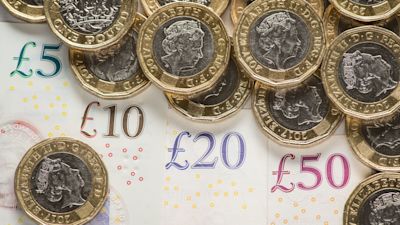Coronavirus: How does the current recession compare to the 2008 crash?

The UK has nosedived into the largest recession on record after GDP plunged 20.4% between April and June, as the economy struggles to recover from the impact of coronavirus and lockdown.
Despite the Treasury's efforts to boost a financial recovery from the pandemic, the UK is still facing recession.
Chancellor Rishi Sunak said "hard times" are now here but promised "hope" for everyone.
But how does this crash compare to the previous collapses in the economy?
UK enters 'largest recession on record' after coronavirus crisis shrinks the economy
Coronavirus: Chancellor warns of 'severe recession the likes of which we have not seen'
There is self-evidently going to be a recession as GDP plummets during coronavirus outbreak
Coronavirus crash
The latest GDP figures show a fall of 20.4% between April and June - signalling the economy is in the worst recession since records began.
It follows a 2.2% fall in the previous three months, when activity plunged 5.8% in March - the biggest fall since the end of 2008 at the height of the financial crisis.
In terms of unemployment, looking at an overview for August 2020, the ONS says a decrease in employment on the most recent quarter was the largest since 2009.
Rishi Sunak said: "Today's figures show that hard times are here, hundreds of thousands of people have already lost their job and sadly many more will."
Wages look to be taking a hit too.
For June 2020, average regular pay (before tax and other deductions) was estimated at £504 per week according to the ONS.
While regular pay growth for the second quarter of the year is negative for the first time since records began in 2001.
Great Recession
In April to June 2008, the size of the UK economy began to fall - after sixteen years of growth.
GDP fell for five successive quarters - way beyond the two or more consecutive quarters usually used to define a recession.
Though the employment rate didn't take too much of a hit initially when the recession hit in 2008, the real impact was felt in the years following.
Unemployment reached its highest rate since 1995 by the end of 2011 - with almost 2.7 million people looking for work.
It took seven years for the rate of unemployment to return to its pre-crash rate.
The UK economy, in terms of GDP, took five years to get back to the size it was before the 2008 recession.
The percentage change in real earnings fell off a cliff as the crash hit and earnings lagged behind prices for most of the remaining decade.
How has coronavirus hit GDP growth rates?
The GDP growth rate in the UK averaged 0.59 per cent from 1955 until 2020.
The all time high hit 5 per cent in the first quarter of 1973 and a record low of -2.70 per cent in the first quarter of 1974.
The last growth rate for the UK came in at - 2.20 per cent.